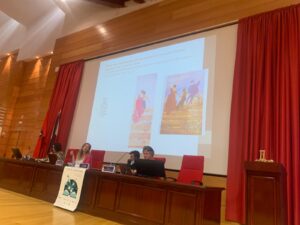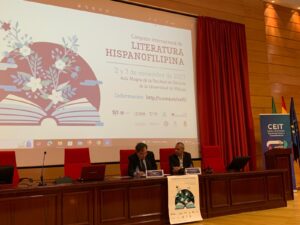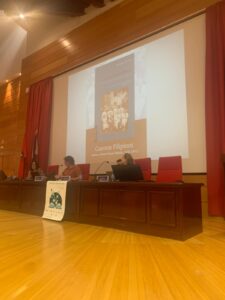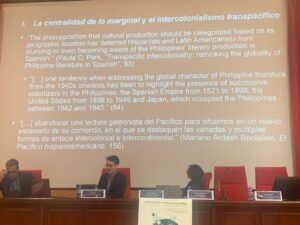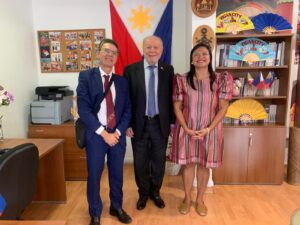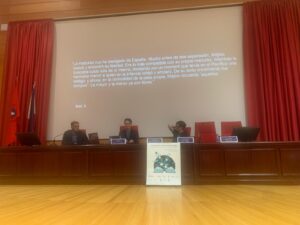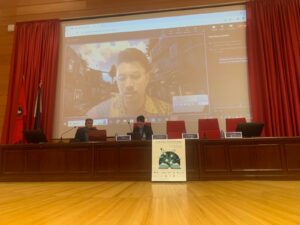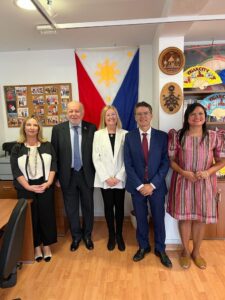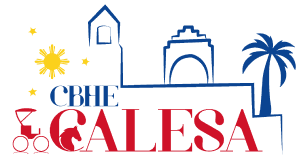Description
This seminar is composed of 2 seminar sessions and an International Convention.
Both sessions of the seminar will focus on the Common Framework of Reference for the Languages: Learning, Teaching and Assessment issued by the European Council in 2001 and recently updated by a Companion volume in 2018 with the idea of disseminating “plurilingualism” and interculturality among its member states.
Sessions will also focus on the Teaching of Spanish as a second language, the language of advertising and close vs. distant reading.
The Convention, on the other hand, will highlight the value of Philippine literature written in Spanish in order to emphasize its connection with the Spanish-speaking community and its relevance in the Asian context.
Session 1 – Languages in the Plurilingual and Pluricultural World: A Conference on the Currents and Use of Spanish, English, Filipino, Chavacano, and Hiligaynonin Selected Domains
Hosted by Ateneo de Zamboanga Univresity and University of San Agustin in Iloilo, with the support of of Universidad de Malaga in Spain
| When | From 23 to 25 June 2021 |
| Where | Online |
| Target audience | Judges Law and policy makers Attorneys Faculty Professors and students of CALESA partner institutions Other interested faculty and students of law |
| Programme | Download the programme of the seminar Download the abstracts of the presentations |
| Registration | https://zoom.us/j/99855813005?pwd=SkJDV2Y1Si9lRDk5TEk1c1lsOXZpZz09 (Access closed) |
| Streaming | Daily: https://zoom.us/meeting/tJ0lcuygrzgqGtFZv5K38VcgoMXX6fPHtkZw/ics?icsToken=98tyKuChpj4vEtWWsBmCRox5Go_4Z_zzmHZfjbd7pgmwKHMLVADxOc96CuR5IPDE Join Zoom Meeting https://zoom.us/j/99855813005?pwd=SkJDV2Y1Si9lRDk5TEk1c1lsOXZpZz09 |
| Outputs | To be posted (presentations) |
| Speakers | Fr. Rene C. Tacastacas, SJ – Vice President for Higher Education, Ateneo de Zamboanga University Dr. Jose Manuel de Torres Perea – Coordinator of the Erasmus + CBHE CALESA Project. Profesor Titular de Derecho Civil Facultad de Derecho, Campus de Teatinos, Universidad de Málaga Dr. Juan Antonio Perles Rochel – Coordinator of the Malaga University Masters in English Studies and Multicultural Communication and Dean of the Faculty of Arts and Humanities, Universidad de Malaga, Spain Fr. Antonio de Castro SJ, Ph.D., Professor and Researcher of History,Faculty, Ateneo de Manila University and Ateneo de Zamboanga University Dr. Javier Calle Martín, Researcher and Teacher of History of English and Post-Graduate Studies on Quantitative Linguistics and Research Techniques for Synchronic and Diachronic Studies, Universidad de Malaga, Spain) Dr. Sara Robles Ávila – Teacher, Book Writer, and an International Researcher with Focuses on Literary Works via Linguistics, Advertising, and Teaching and Learning of Spanish as a Second Language, Universidad de Malaga, Spain Prof. Isidoro M. Cruz, Ph.D. – Recipient of National Book Awards and Two-Time First-Prize Palanca Winner for Poetry and Short Story and Secretary of the National Committee on Literary Arts of the National Commission for Culture and the Arts and Faculty, University of San Agustin, Iloilo, Philippines Dr. Mary Ann Jaro, Regional Coordinator for Western Visayas -National Committee on Literary Arts (NCLA) and Faculty, University of San Agustin Robin Atilano De Los Reyes, Ph.D., Researcher and Dean of the School of Liberal Arts, Ateneo de Zamboanga University Dr. Rosario Arias Doblas – Director of the Doctoral Programme in Linguistics, Literature, and Translation and Head of Department of English, French and German, Universidad de Malaga, Spain Dr. Francisco Pineda Castillo – Senior Lecturer in Applied Linguistics at the University of Málaga and Visiting Lecturer at the Universities of Surrey-Roehampton and Edinburgh (UK), Harvard University (US), and Lund (Sweden) Jorge Lopez Cortina, Ph.D., Professor of Spanish Linguistics, Seton Hall University, New Jersey, USA Dr. Claribel C. Concepcion, Ph.D. – Research Editor and Faculty of the School of Liberal Arts, Ateneo de Zamboanga University |
| More information | Dissemination actions: – Television Broadcast: https://ne-np.facebook.com/EmediaMo/videos/report-del-pueblo-replay/161460602634798/ (minutes 45.56 to 50) – News: https://opinion.inquirer.net/141713/espanol-beyond-codes-cuisine-and-curse-words |
Session 2 – The Plurilingual Classroom:
A Seminar on Dynamic Approaches to Teaching Foreign Languages, Literatures, and Cultures
Hosted by the University of San Agustin, Iloilo City, Philippines
| When | 27-28 May 2023 |
| Where | Hotel Sta. Monica, University of San Agustin – Iloilo, the Philippines |
| Target Audience | Judges Law and policy makers Attorneys Faculty Professors and students of CALESA partner institutions Other interested faculty and students of law |
| Programme | Download the programme here. |
| Registration | Registration at USA |
| Streaming | The event can be seen here: https://fb.watch/rcb0Y20CGH/ |
| Outputs | Presentations: 1- A Multimodal approach to SLA – Prof. Francisco Castillo 2 – Varieties of English Worldwide: Philippines English in the context of Asian Englishes – Prof. Javier Calle Martín 3 – STEM, STEAM and Shape: science and technology in contemporary anglophone literature and culture – Prof. Rosario Arias |
| Speakers | REV. FR. FREDERICK C. COMENDADOR, O.S.A. – President, University of San Agustin DR. NENELYN D. DE LA FUENTE – Dean, College of Liberal Arts, Sciences, and Education University of San Agustin ATTY. JOSE MARI BENJAMIN F. U. TIROL – Dean, College of Law University of San Agustin DR. JOSE MANUEL TORRES DE PEREA – Coordinator, CALESA Project, Facultad de Derecho Universidad de Málaga MS. MICHELLE R. BAYAUA DR. JUAN ANTONIO PERLES ROCHEL – Dean and Professor of American Literature, Coordinator of the Malaga University Masters in English Studies and Multicultural Communication and Dean of the Faculty of Arts and Humanities, Universidad de Malaga, Spain DR. SARA ROBLES ÁVILA – Professor of Spanish Language, Teacher, Book Writer, and an International Researcher with Focuses on Literary Works via Linguistics, Advertising, and Teaching and Learning of Spanish as a Second Language Universidad de Malaga, Spain DR. MA. CECILIA D. ALIMEN DR. FRANCISCO PINEDA CASTILLO – Professor of English Language Senior Lecturer in Applied Linguistics at the University of Málaga Visiting Lecturer at the Universities of Surrey-Roehampton and Edinburgh (UK), Harvard University (US) and Lund (Sweden) DR. JAMES D. PEDREGOSA DR. JAVIER CALLE MARTÍN – Professor of English Language Researcher and Teacher of History of English and Post-Graduate Studies on Quantitative Linguistics and Research Techniques for Synchronic and Diachronic Studies Universidad de Malaga, Spain PROF. SHARON MARIE AGUIAR DR. ROSARIO ARIAS – Professor of English Literature Director of the Doctoral Programme in Linguistics, Literature, and Translation and Head of Department of English, French and German Universidad de Malaga, Spain DR. ISIDORO M. CRUZ PROF. RHOUNELLA RHANE M. MAGPANTAY |
| More information | https://usa.edu.ph/usa-to-host-calesa-event-for-3rd-time/ |
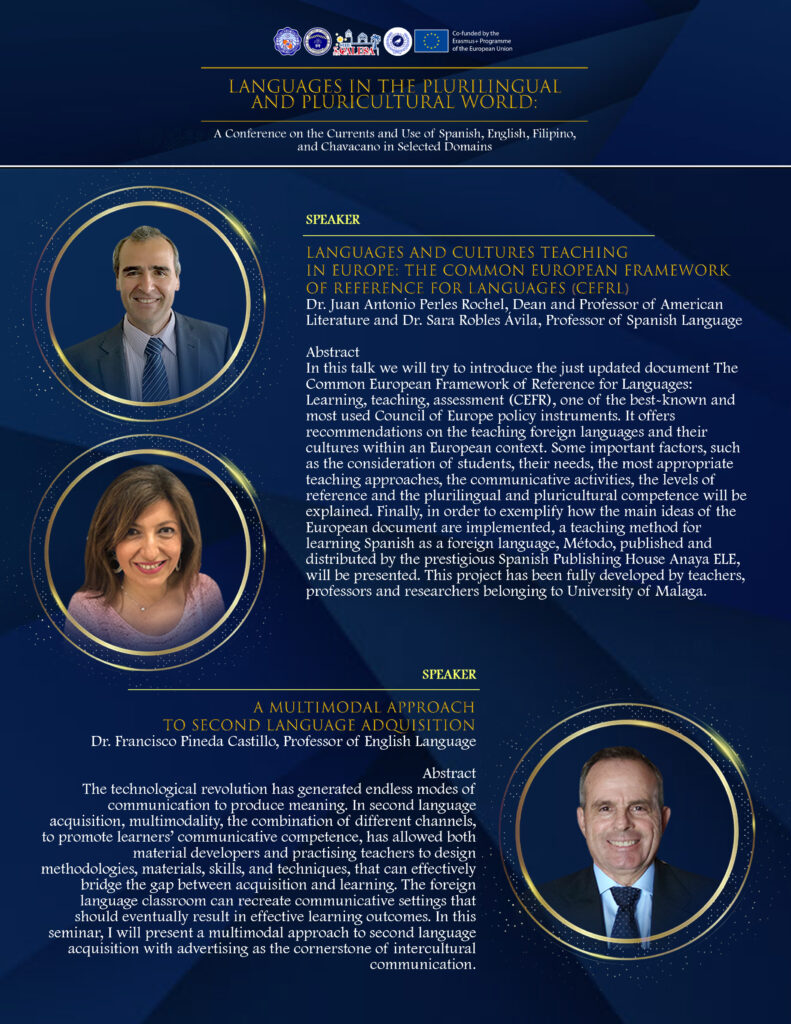
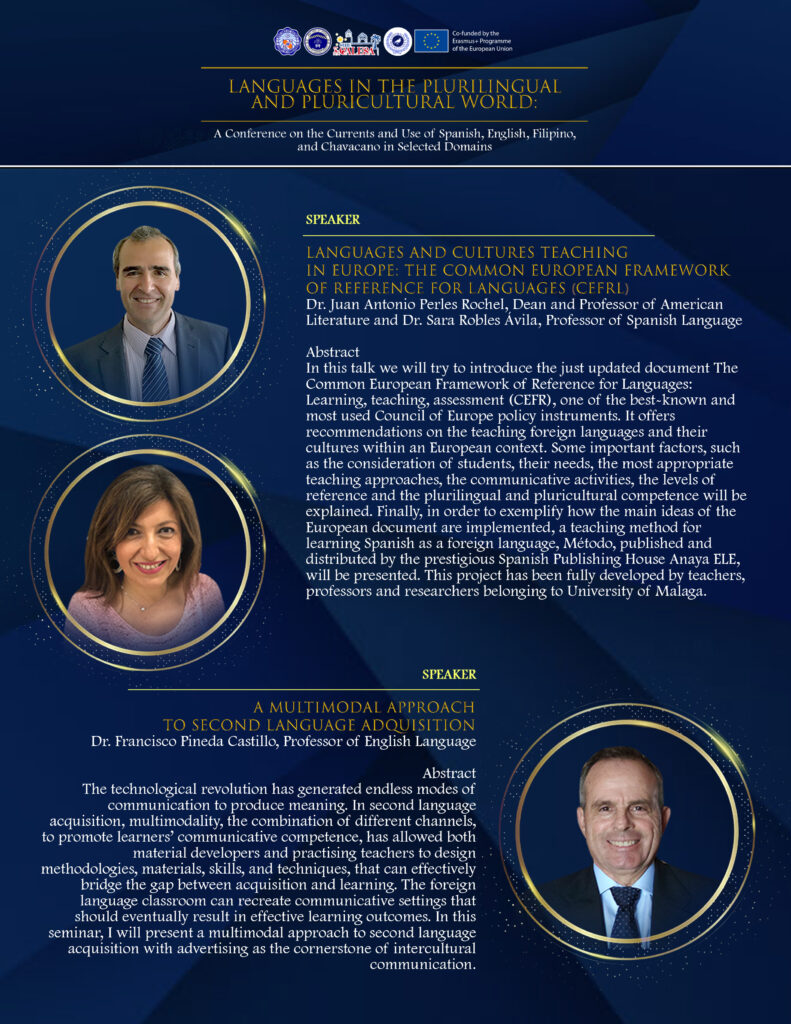
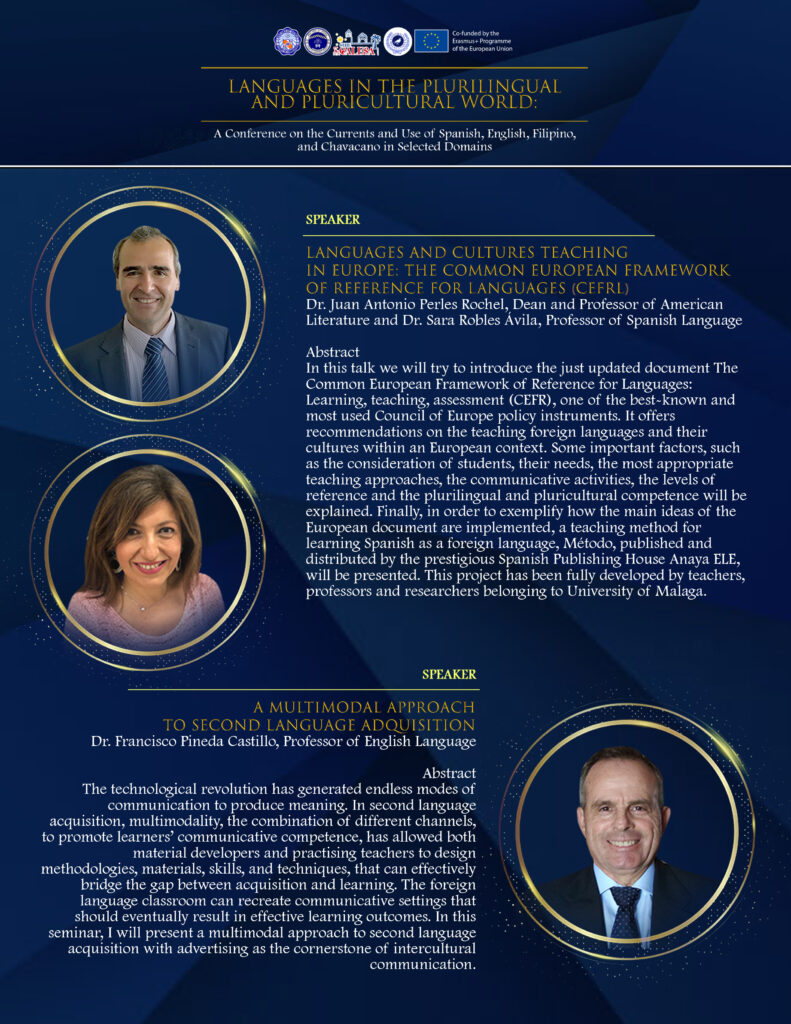
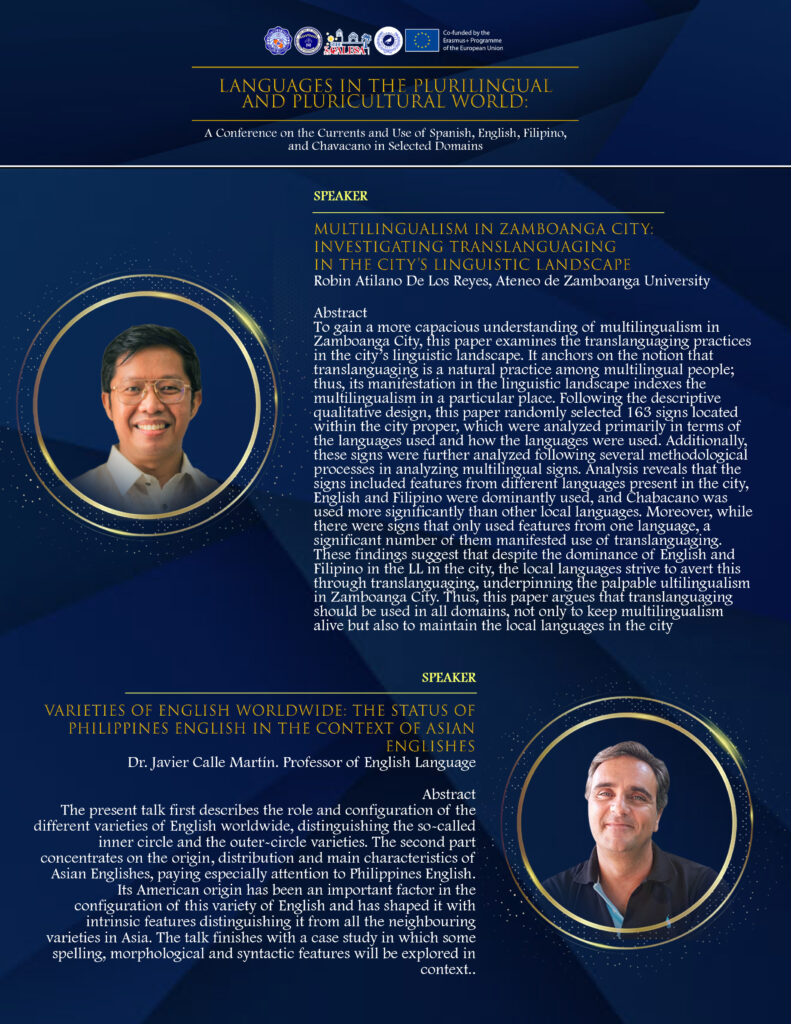
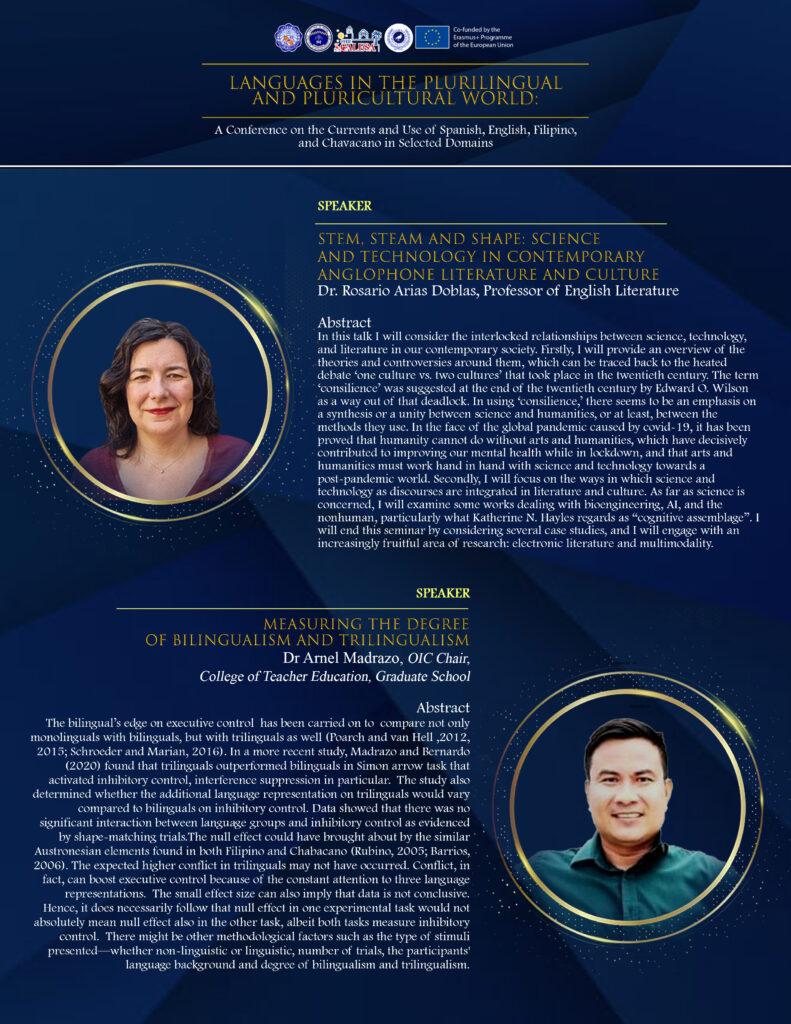

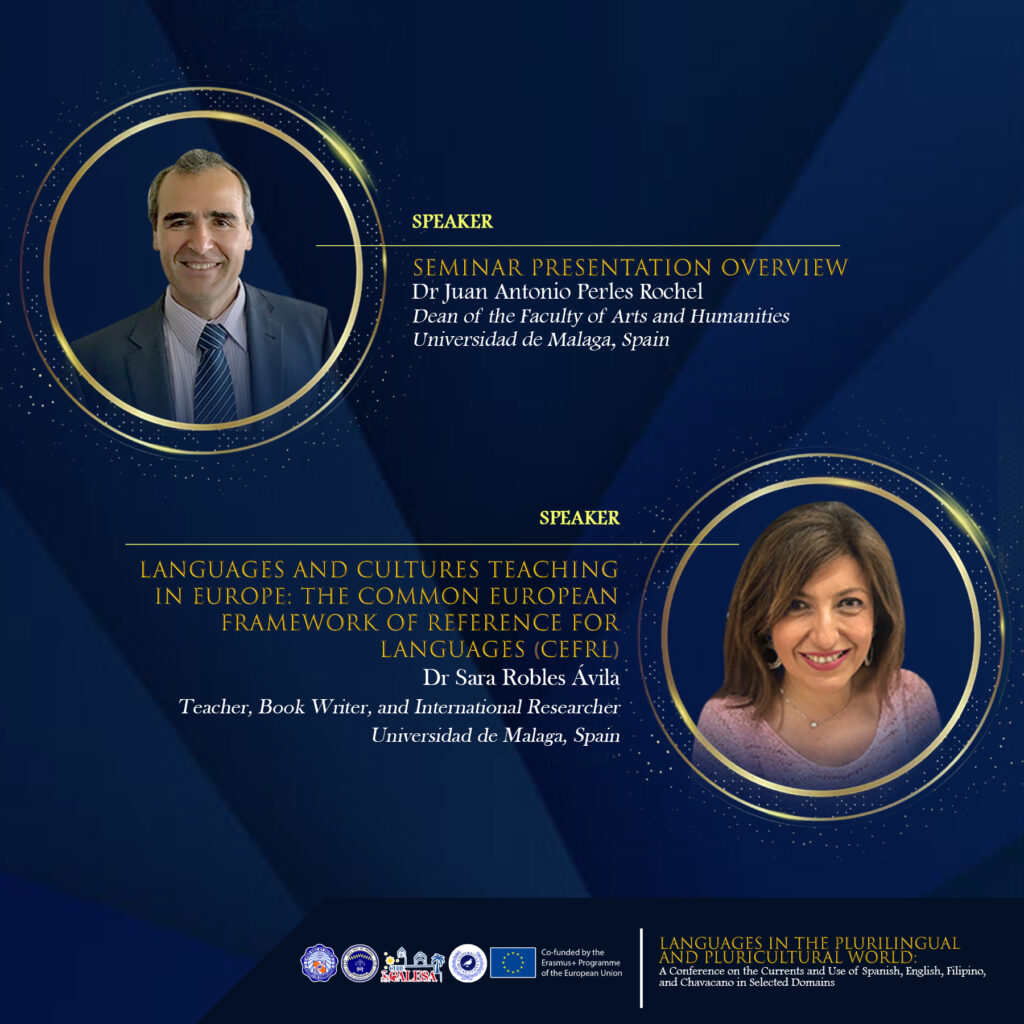
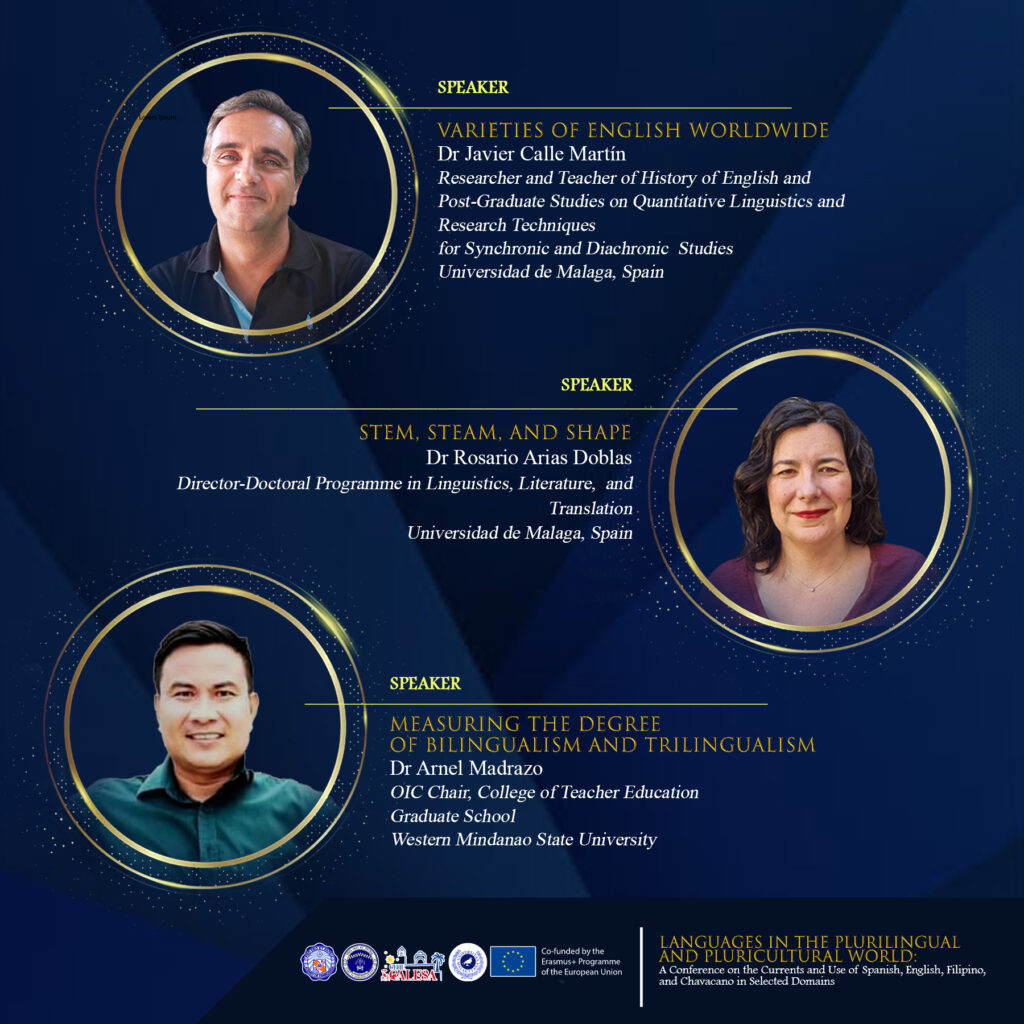
Convention on Philippine Literature in Spanish
| When | 2nd – 3rd November 2023. |
| Where | Universidad de Málaga – Spain |
| Target Audience | Judges Law and policy makers Attorneys Faculty Professors and students of CALESA partner institutions Literature and Language Professors and Researchers Other interested faculty and students of law |
| Programme | Infosheet of the event Call for papers Download the programme of the Convetion here |
| Registration | International Convention: starts on 10 May 2023 |
| Speakers | Jorge Mojarro University of Santo Tomás de Manila Beatriz Álvarez-Tardío Rey Juan Carlos University, Spain Rocío Ortuño Universidad de Alcalá, Spain Universiteit Antwerpen, Belgium Axel Gasquet Université Blaise Pascal – University Clermont Auvergne, France Enrique Baena Peña Universidad de Málaga, Spain Diego Abad Far Easter University, Philippines Wystan de la Peña University of the Philippines, Philippines Lola Elizalde Lead Researcher of OPIS Sony Corañez Bolton Amherst College, Massachusetts, USA John Blanco University of California, San Diego, USA Antonio Quesada Sánchez Universidad de Málaga, Spain |
| More information | KEY INFORMATION Deadline for submission of proposal/summary: 10 May 2023 Notification of acceptance of proposals: 30 May 2023. Deadline for registration: 15 September 2023. Each accepted proposal will require a 20-minute presentation to be given at the event. Accepted papers will be submitted to a blind “peer review” process in order to be published in the CRISOL Journal (https://crisol.parisnanterre.fr/index.php/crisol/revuecrisol/) Proposals and inquires about the event should be sent to: calesacbproject@uma.es |
| Dissemination | Webpage of the event: https://calesaproject-cbhe.eu/wp-content/uploads/2021/01/Dissemination_UMA_webpage.pdf Website 01: https://calesaproject-cbhe.eu/wp-content/uploads/2021/01/ESCRIB1.pdf Website 02: https://calesaproject-cbhe.eu/wp-content/uploads/2021/01/LAUMAI1.pdf Website 03: https://calesaproject-cbhe.eu/wp-content/uploads/2021/01/LAUNIV1.pdf Website 04: https://calesaproject-cbhe.eu/wp-content/uploads/2021/01/Noticias-Agenda-–-La-America-espanola.pdf Newspaper: https://calesaproject-cbhe.eu/wp-content/uploads/2021/01/Nuevo-doc-2023-10-31-09.14.49-1.pdf Newspaper 02: https://calesaproject-cbhe.eu/wp-content/uploads/2021/01/UNIVER1.pdf Interview: https://calesaproject-cbhe.eu/wp-content/uploads/2021/01/WhatsApp-Video-2023-05-12-at-13.57.30.mp4 |
Relevant References on the Seminar’s topics
Breen, M. P. (1987). Paradigmas contemporáneos en el diseño de programas de lenguas. Comunicación, lenguaje y educación, 7-8, 7-32. Obtenido el 10 de octubre de 2018 desde http://www.quadernsdigitals.net/datos_web/hemeroteca/r_3/nr_47/a_680/680.html.
Canale, M. y Swain, M. (1980). Theoretical bases of communicative approaches to second language teaching and testing. Applied Linguistics, 1, 1-47.
Candlin, C.N. (1987). Towards task-based language learning, en C.N. Candlin & D. Murphy. Language learning tasks. Englewood Cliffs, NJ: Prentice Hall International.
Conseil, L., García-Marques, M.E., McDaniel Mann, S. (2014). Aplicación del enfoque orientado a la acción en la enseñanza de idiomas. XI Jornadas Internacionales de Innovación Universitaria: Educar para transformar (pp. 106-113). Valencia: Universidad de Valencia.
Consejo de Europa (2002). Marco Común Europeo de Referencia para las Lenguas: aprendizaje, enseñanza, evaluación. Madrid: Secretaría General Técnica del MEC, Instituto Cervantes y Editorial Anaya. http://cvc.cervantes.es/obref/marco. (27/03/2020)
Consejo de Europa (2018). Common European Framework of Reference for Languages: Learning, Teaching, Assessment. Companion Volume with New Descriptors, Strasbourg: Council of Europe. https://rm.coe.int/cefr-companion-volume-with-new-descriptors-2018/1680787989 (27/03/2020)
Delibas, M. y Günday, R. (2016). Action-Oriented Approach in Foreign Language Teaching. Participatory Educational Research (PER), Special Issue, IV, 144-153.
Dell Hymes (1972), On communicative competence, en J.B. Pride y J. Holmes (Eds.) Sociolinguistics. Selected readings (pp. 269-293). Harmondsworth: Penguin.
Dormal, A. (2008). El enfoque orientado a la acción y su repercusión en el análisis de materiales. http://cvc.cervantes.es/ensenanza/biblioteca_ele/publicaciones_centros/PDF/rio_2008/46_dormal.pdf. (27/03/2020)
Fernández, S. (2011). Nuevos desarrollos y propuestas curriculares. Programar a partir del MCER. Madrid: MarcoELE.
Llorián, S. (2007). Entender y utilizar el Marco común europeo de referencia desde el punto de vista del profesor de lenguas. Madrid: Santillana, Universidad de Salamanca.
Martín Peris, E. (2004). ¿Qué significa trabajar en clase con tareas comunicativas?, REDELE, n. 0. Obtenido el 10 de octubre de 2018 desde https://www.mecd.gob.es/dam/jcr:6c042cff-8f14-43de-87f3-9de353ab511d/2004-redele-0-18martin-pdf.pdf.
Martín Peris, E. (2005). La enseñanza de la gramática según el MCER, Carabela, 57, 81-102.
Martínez Salido, B. (2007). ¿Qué significa aprender a través de la acción?, en E. Palo y A. Fernández (Eds.) La enseñanza del español como lengua extranjera en Quebec. Actas del CEDELEQ II, 10-13 de mayo de 2007. Montreal: Université de Montreal. Obtenido el 10 de octubre de 2018 desde http://www.cre.umontreal.ca/cedeleq/documents/2BMS.pdf.
Nunan, D. (2005). Task-based Language Teaching. Cambridge: Cambridge University Press.
Piccardo, E. (2014). From communicative to action-oriented: a research pathway. Canada: Curriculum Services Canada.
Puren, Ch. (2015). Enfoque comunicativo versus enfoque orientado a la acción social. Les Cahiers du Géres, 7, 104-120.
Ríos Rojas, A. (2014). El proceso de inmersión lingüística y cultural: un nuevo enfoque orientado a la acción a través de la experiencia, en N. M. Contreras Izquierdo (Ed.) La enseñanza del español como LE/L2 en el siglo XXI (pp. 603-614). Granada: Universidad de Granada.
Robles Ávila, S. (2017). Deconstrucción del enfoque orientado a la acción, en AA.VV. La generosidad y la palabra. Estudios dedicados al profesor Jesús Sánchez Lobato (pp. 255-271). Madrid: Sgel.
______ (2019). A vueltas con el enfoque orientado a la acción: leyendo las nuevas aportaciones desde el Volumen Complementario del Marco Común Europeo de Referencia (2017)”, Álabe, n.19.
Romero Dueñas, C. y González Hermoso, A. (2006). El enfoque por competencias orientado a la acción. 603-614 http://www.edelsa.it/Area_profesor/Articulos/articulo6.pdf.
Trim, J. (Ed.) (2001). Common European Framework of Reference for Languages: Learning, teaching and assesment. A guide for users. Strasbourg: European Council. Language Policy Division.
Aleza Izquierdo, M (coord.) (2010). Normas y usos correctos en el español actual, Valencia, Tirant lo Blanch (col. Prosopopeya).
Demonte, V. (2003). Lengua estándar, norma y normas en la difusión actual de la lengua española, Circunstancia, año I, n.º 1, abril, Madrid, Fundación Ortega y Gasset. (En línea: http://www.ortegaygasset.edu/contenidos.asp?id_d=394).
Diccionario de gestos españoles. (En línea:http://coloquial.es/es/diccionario-de-gestos-espanoles/).
Diccionario de términos clave de ELE. (En línea: http://cvc.cervantes.es/ensenanza/biblioteca_ele/diccio_ele/).
Dubois, J. y otros (1973). Dictionnaire de Linguistique, Paris, Larousse. Versión española de Inés Ortega y Antonio Domínguez; dirección y adaptación de Alicia Yllera (1979): Diccionario de lingüística, Madrid, Alianza Diccionarios.
Gómez Torrego, L. (2006). Hablar y escribir correctamente. Gramática normativa del español actual I. Acentuación, Puntuación, Ortografía, Pronunciación, Léxico, Estilo, 2.ª ed., 2007, Madrid, Arco/Libros, S. L.
_____ (2006). Hablar y escribir correctamente. Gramática normativa del español actual II. Morfología y sintaxis, 2.ª ed., 2007, Madrid, Arco/Libros, S. L.
Lázaro Carreter, F. (2005). El nuevo dardo en la palabra, Madrid, Alianza.
Montolío E. (coord.) (2000). Manual práctico de escritura académica [Vols. I, II y III], Barcelona, Ariel.
Real Academia Española (2005). Diccionario de la lengua española (DRAE), 23ª edición, Madrid, Espasa Calpe. (Disponible en línea http://lema.rae.es/drae)
Real Academia Española (2005). Diccionario panhispánico de dudas (DPD),
Madrid, Santillana. (Disponible en línea: http://lema.rae.es/dpd/).
Real Academia Española (2009). Nueva gramática de la lengua española, Madrid, Espasa Calpe.
Adam, J.M. y Bonhomme, M. (2000). La argumentación publicitaria. Retórica del elogio y de la persuasión, Madrid: Cátedra.
Aparici, R. y García Matilla, A. (1989). Lectura de imágenes, Madrid: Ediciones de la Torre.
Avogrado Thomé, M. y Ricardo Quiroga, S. (2016). La publicidad y las nuevas narrativas: de la linealidad a la transmedialidad, Contratexto, 25, pp. 63-72.
Ducrot, O. (1984): El decir y lo dicho. Polifonía de la enunciación, Barcelona: Paidós.
Ferraz Martínez, A. (1993). El lenguaje de la publicidad, Madrid: Arco Libros.
Franzen, G. (1994). Advertising Effectiveness. London: NTC Publications, Ltd.
Fuentes, C. y Alcalde, E. (2002). Mecanismos lingüísticos de la persuasión, Madrid: Arco Libros.
Givón, Th. (2002). The visual information-processing system as an evolutionary precursor of human language, en Givón, Th. & Malle, B. (eds.) The Evolution of Language out of Pre-language, Amsterdam: John Benjamins, pp. 3-50.
Gutiérrez Ordóñez, S. (1997). Análisis lingüístico de textos publicitarios, Madrid: Arco Libros.
Alonso Aparicio, I. (2014). Fundamentos cognitivos de la práctica sistemática en la
enseñanza gramatical, en Castañeda, A. (coord.), Enseñanza de gramática avanzada de
ELE: criterios y recursos. Madrid: Sgel.
Ausubel, D.P. (1976). Psicología educativa: un punto de vista cognoscitivo. México:
Editorial Trillas.
Cadierno, T. y Lund, K. (2004). “Cognitive Linguistics and Second Language Acquisition: Motion Events in a Typological Framework”. En Van-Patten, B., Williams, J., Rott, S. & Overstreet, M. (eds.), Form-Meaning Connections in Second Language Acquisition. Nueva Jersey: Lawrence Erlbaum, pp. 139-144.
Castañeda, A. (2004). Potencial pedagógico de la gramática cognitiva.pautas para la elaboración de una gramática pedagógica del español/LE, Redele, n. 0, marzo. http://www.mecd.gob.es/dctm/redele/Material-RedEle/Revista/2004_00/2004_redELE_0_06Castaneda.pdf?documentId=0901e72b80e0c73e
______ (coord.) (2014). Enseñanza de gramática avanzada de ELE: criterios y recursos. Madrid: Sgel.
______ y Ortega, J. (2001). Atención a la forma y gramática pedagógica: algunos criterios para el metalenguaje de presentación de la oposición ‘imperfecto/indefinido’ en el aula de español/ LE. En Pastor Cesteros, S. y Salazar García, V., Estudios de Lingüística, Anexo 1, Tendencias y líneas de investigación en adquisición de lenguas, Universidad de Alicante, pp. 5-84.
______ y Alonso, R. (2009). La percepción de la gramática. Aportaciones de la lingüística cognitiva y la pragmática a la enseñanza de ELE, Marcoele, n. 8, 2009. http://marcoele.com/la-percepcion-de-la-gramatica-aportaciones-de-la-linguistica-cognitiva-y-la-pragmatica/
Cifuentes Honrubia, J.L. (1994). Gramática cognitiva: fundamentos críticos. Madrid: Ed. Eudema.
Dirven, R., et alii (2001). Language and Ideology, I y II: theoretical cognitive approaches. University of Duisburg / Illinois State University
Doughty, C. J. y Williams, J. (eds.) (1998). Focus on Form in Classroom Second Language Acquisition. Cambridge: Cambridge University Press.
______ (1998). Pedagogical choices in focus on form”, en C.J. Doughty, y Williams, J. (eds.) (1998): Focus on Form in Classroom Second Language Acquisition. Cambridge: Cambridge University Press.
Langacker, R. W. (1987). Foundations of cognitive grammar: Theoretical Prerequisites. Stanford, C.A: Stanford University Press.
______ (2008). “The relevance of Cognitive Grammar for language pedagogy”. En De Knop, S. y De Rycker, T. (eds.): Cognitive Approaches to Pedagogical Grammar. Berlín/Nueva York: Mouton de Gruyter, pp. 7-36.
Lee, D. (2001). Cognitive Linguistics: an Introduction. Oxford: Oxford University Press. Communicative language teaching. Studies in Second Language Acquisition 12-4, pp. 429-448.
Llopis García, R. (2011). Gramática Cognitiva para la Enseñanza del Español como Lengua Extranjera. Monografías ASELE n. 14. Madrid: Secretaría General Técnica. Centro de Publicaciones. Ministerio de Educación.
______, Real Espinosa, J. M. y Ruiz Campillo, J. P. (2012). Qué gramática enseñar, qué gramática aprender. Madrid: Edinumen.
Long, M. H. (1983). Does second language instruction make a difference? A review of research. TESOL Quarterly, 17, pp. 359-382.
______ (1985). Input and second language acquisition theory. En S. Gass and C. Madden (eds.), Input and second language acquisition. Rowley, Mass.: Newbury House, pp. 377-393.
______ (1991). Focus on form: A design feature in language teaching methodology. En K. DeBot, R. Ginsberg, and C. Kramsch (eds.): Foreign language research in crosscultural perspective. Amsterdam: John Benjamins, pp. 39-52.
______ (1996).: The Role of the Linguistic Environment in Second Language Acquisition. En Rithcie, C. y Bhatia, T. K. Handbook of Second Language Acquisition. San Diego: Academic Press, pp. 413-468.
______ (1997). Focus on form in task-based language teaching. Annual McGraw—Hill Teleconference in Second Language Teaching, http://www.mhhe.com/socscience/foreignlang/conf/ref.htm.
Robles Ávila, S. (2005). Tareas formales en ELE: un acercamiento metalingüístico a los contenidos gramaticales. En Las gramáticas y los diccionarios en la enseñanza del español como segunda lengua, deseo y realidad Actas del XV Congreso Internacional de ASELE, Sevilla, 2004. http://cvc.cervantes.es/ensenanza/biblioteca_ele/asele/pdf/15/15_0739.pdf
______, (2017). Presentación y prácticas operativas de las conceptualizaciones gramaticales en ele, en C. Muñoz Medrano (ed.), Lengua y Cultura españolas, Cándida Muñoz Medrano (Ed.), pp. 81-117
Ruiz Campillo, J.P. (1995). La enseñanza significativa del sistema verbal: un modelo operativo (Tesis doctoral). En Biblioteca RedELE, Ministerio de Educación y Ciencia, http://www.sgci.mec.es/redele/biblioteca/ruiz_campillo.htm).
______ (2007). Gramática cognitiva y ele, Marcoele, n. 5: http://marcoele.com/gramatica-cognitiva-y-ele/
Ruiz de Mendoza Ibáñez, F. J. (2008). Cross-linguistic analysis, second language teaching and cognitive semantics: The case of Spanish diminutives and reflexive constructions. En De Knop, S. & De Rycker, T. (Eds.), Cognitive Approaches to Pedagogical Grammar. Berlín/Nueva York: Mouton de Gruyter, pp.121-153.
Sharwood Smith, M. (1981). Consciousness-raising and the second language learner, Applied Linguistics, 2, pp.159-68.
Spada, N. (1997). “Form-focussed instruction and second language acquisition: a review of classroom and laboratory research”. Language Teaching, 30-2, pp. 73-87.
Van Patten, B. (1996). Input Processing and Grammar Instruction: Theory and Research. Nueva Jersey: Ablex Publishing Corporation.
Berger, Asa, How to analyse an advertisement. Available at http://www.medialit.org/reading-room/how-analyze-advertisement
Brown, Semmi (1996). Chinese in the marketplace: Learn Chinese from Advertising. Hong Kong: Greenwood Press.
Cook, Guy (2001). The Discourse of Advertising. 2nd ed. London: Routledge.
_____(ed) (2008). The Language of Advertising (4 volumes). London: Routledge.
Coyle, Do et al. (2010), Content and Language Integrated Learning. Cambridge: C.U.P.
Csikszentmihalyi, Mihaly (1997). Creativity: flow and the psychology of discovery and invention. New York: Harper Perennial.
Firth, K. (1998). Undressing the ad: reading culture in advertising. Bern: Peter Lang.
Gardner, Howard (1983). Frames of Mind: The Theory of Multiple Intelligences. New York, Basic Books.
Gass, Susan & Alison Mackey (2013). The Routledge handbook of second language acquisition. London: Routledge.
Goddard, Angela 2002, The Language of Advertising. 2nd Ed. London: Routledge.
Herschensohn, Julia & Martha Young-Scholten (2013). The Cambridge handbook of second language acquisition. Cambridge: C.U.P.
Instituto Andaluz de la Mujer. El análisis de la publicidad: orientaciones para una lectura crítica. (recurso electrónico) Sevilla, 2004.
Kelly-Holmes, H. (2005). Advertising as multilingual communication. Basingstoke: Palgrave Macmillan.
Kramsch, Claire (1995) The cultural component of language teaching. Language, Culture and Curriculum, 8(12), pp. 83-92.
Krashen, Stephen D. (1985). The Input Hypothesis: issues and implications. Harlow, Longman.
Laing, Gerald (2012). Marketing & Advertising Today. Mississagua, ON: Benchmark Communications. Available at http://www.bmcommunications.com/bmk.htm (accessed March 2014).
Lucas, S. (2012). How to read ads. Available at www.genderads.com/page4/howtoread/howtoread.html
Macaro, Ernesto (ed), 2014, The Bloomsbury Companion to Second language Acquisition. London & N.Y.: Blumsbury Publishing
MacRury, Iain (2009). Advertising. London and New York: Routledge.
Nederstigt, Ulrike & Béryl Hilberink-Schulpen (2018). Advertising in a Foreign Language or the Consumers’ Native Language?, Journal of International Consumer Marketing, 30:1, 2-13, DOI: 10.1080/08961530.2017.1363008
Palmer, J.C. (1998). La utilización de la publicidad en Internet dentro del aula de inglés. Comunicar 11, pp. 137-141.
Picken, Jonathan (1999). State of the ad: The Role of Advertisements in EFL Teaching. ELT Journal 53, 4: 244-55.
Pineda Castillo, Francisco (2004). An Integrating Approach to Applied Linguistics: Academic and Professional Insights. Granada: Comares.
Pinilla Gómez, R. “El sentido literal de los modismos en la publicidad y su explotación en la clase de español como lengua extranjera E/EL. Actas del VII Congreso Internacional de ASELE, pp. 349-355.
Richards, Jack C. & Theodore S. Rodgers. (2014). Approaches and Methods in Language Teaching: A Description and Analysis. 3rd Ed. Cambridge: C.U.P.
Robinson, Ken (2001). Out of our Minds: Learning to be Creative. Chichester: Capstone Publishing Limited.
Sabina de la Maza, Cristina (2013). Estrategias Argumentativas en la Publicidad de Productos Tabú. Estudio Contrastivo. Madrid: (Unpublished PhD).
Ur, Penny (2012). A Course in English language teaching. Cambridge: C.U.P.
Vézina, R. & O. Paul (1994). Provocation in Advertising: A conceptualization and an empirical assessment. International Journal of research in Marketing 14 (2). Québec: University of Sherbrooke.
Villegas Saurí, Sara (2014). Marketingdencias. Madrid: Planeta.
Vokes, Sonia and Francisco Pineda (2004). ‘Advertising in the foreign language classroom: focus on learners’ communicative competence’. Francisco Pineda Castillo, Ed. An Integrating Approach to Applied Linguistics: Academic and Professional Insights. Granada: Comares. 235-54.
Blair, Ann M. (2010). Too Much to Know: Managing Scholarly Information before the Modern Age. New Haven & London: Yale UP.
Bode, K (2017). The Equivalence of “Close” and “Distant” Reading; or, Toward a New Object for Data-Rich Literary History. Modern Language Quarterly, vol. 78, no. 1, pp. 77-106.
Freedman, Jonathan. (2015). “After Close Reading,” in The New Rambler, April 13, 2015, retrieved from http://newramblerreview.com/book-reviews/literary-studies/after-close-reading.
Herrmann, Berenike, Karina van Dalen-Oskam, Christof Schöch, and Christof Schöch. (2015). Revisiting Style, a Key Concept in Literary Studies. Journal of Literary Theory 9 (1): 52. https://doi.org/10.1515/jlt-2015-0003.
Moretti, Franco. (2000). Conjectures on World Literature, in New Left Review 1, retrieved from https://newleftreview.org/II/1/franco-moretti-conjectures-on-world-literature.
_____. (2013). Distant Reading. London and New York: Verso.
North, Joseph (2013). What’s ‘New Critical’ about ‘Close Reading’? I. A. Richards and His New Critical Reception. New Literary History 44: 141-57.
Schreibman, Susan, Ray Siemens, and John Unsworth, eds. (2015). A New Companion to Digital Humanities. John Wiley & Sons.
Underwood, Ted. (2017). A Genealogy of Distant Reading. Digital Humanities Quarterly. 11.2, retrieved from http://www.digitalhumanities.org/dhq/vol/11/2/000317/000317.html
_____ (2019). Distant Horizons: Digital Evidence and Literary Change. Chicago and London: U of Chicago P, .
Alaimo, Stacy. (2010). Bodily Natures: Science, Environment, and the Material Self. Bloomington and Indianapolis.
Arias, Rosario (2011). Life After Man?: Posthumanity and Genetic Engineering in Margaret Atwood’s Oryx and Crake and Kazuo Ishiguro’s Never Let Me Go. Restoring the Mystery of the Rainbow: Literature’s Refraction of Science. DQR Studies in Literature 47. Ed. Valeria Tinkler-Villani and C.C. Barfoot. Amsterdam/New York: Rodopi, pp. 379-94.
Bauman, Zygmunt. (2000). Liquid Modernity. Oxford: Polity.
Benjamin, Marina, ed. (1993). A Question of Identity: Women, Science & Literature. New Brunswick: Rutgers UP.
Clarke, Bruce and Manuela Rossini, eds. (2011). The Routledge Companion to Literature and Science. London and New York: Routledge
Cordle, Daniel. (1999) Postmodern Postures: Literature, Science and the Two Cultures Debate. Aldershot: Ashgate.
De Cristofaro, Diletta, and Cordle, Daniel. (2018). Introduction: The Literature of the Anthropocene. C21 Literature: Journal of 21st-century Writings, vol. 6, no.1, February pp. 1–6, DOI: https://doi.org/10.16995/c21.73.
Fukuyama, Francis. (2003). Our Posthuman Future: Consequences of the Biotechnology Revolution. London: Profile.
Fuller, David & Patricia Waugh, eds. (1999). The Arts & Sciences of Criticism. Oxford: Oxford UP.
Gossin, Pamela, ed. (2002). An Encyclopedia of Literature and Science. Westport and London: Greenwood.
Haraway, Donna. (1991). Simians, Cyborgs and Women: The Reinvention of Nature. New York: Routledge.
Levine, George, ed. (1987). One Culture: Essays in Science and Literature. Wisconsin: U of Wisconsin P.
Marshall, Kate. (2015). What Are the Novels of the Anthropocene? American Fiction in Geological Time. American Literary History, vol. 27, no. 3, September 2015, pp. 523–38, doi:10.1093/alh/ajv032.
Slade, Joseph W. and Judith Yaross Lee, eds. (1990). Beyond the Two Cultures: Essays on Science, Technology, and Literature. Iowa: Iowa State UP.
Wilson, David L. and Zack Bowen. (2001). Science and Literature: Bridging the Two Cultures. Gainesville: UP of Florida.
Session 1


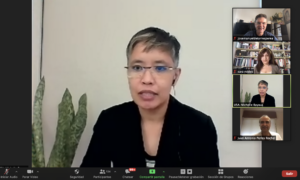
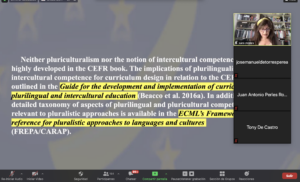
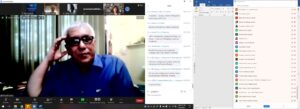
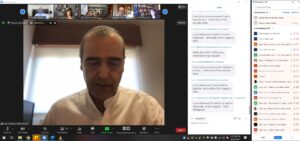
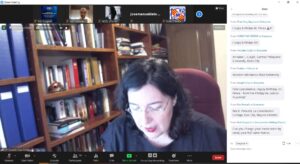
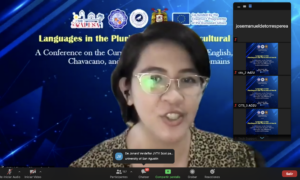
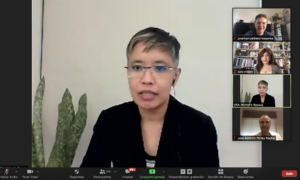
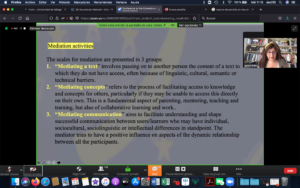




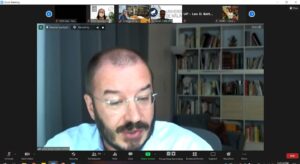
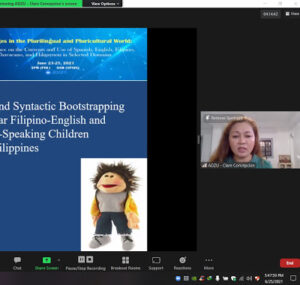
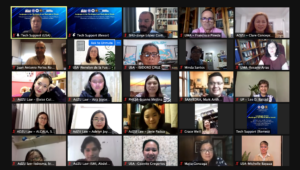



Session 2
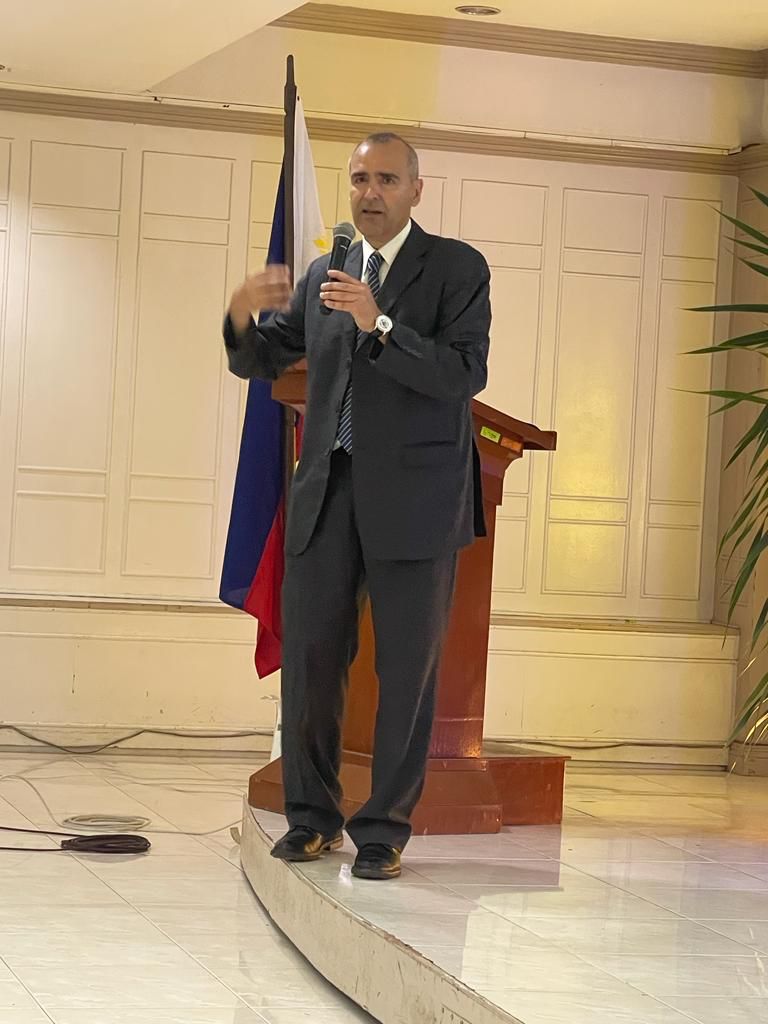
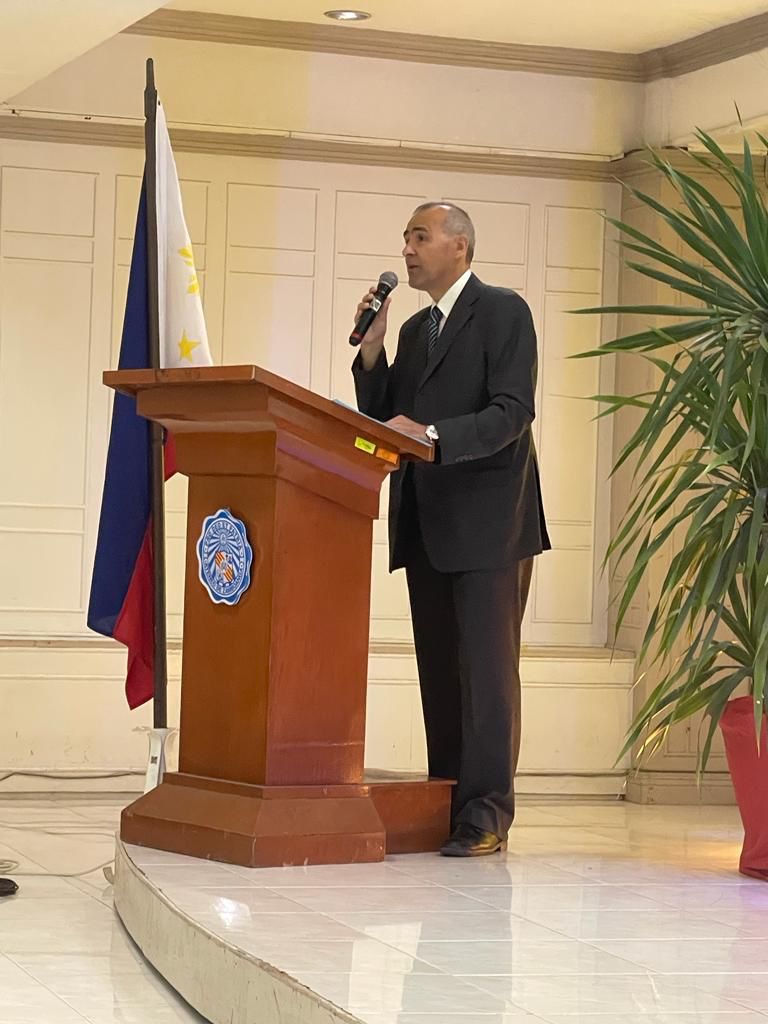

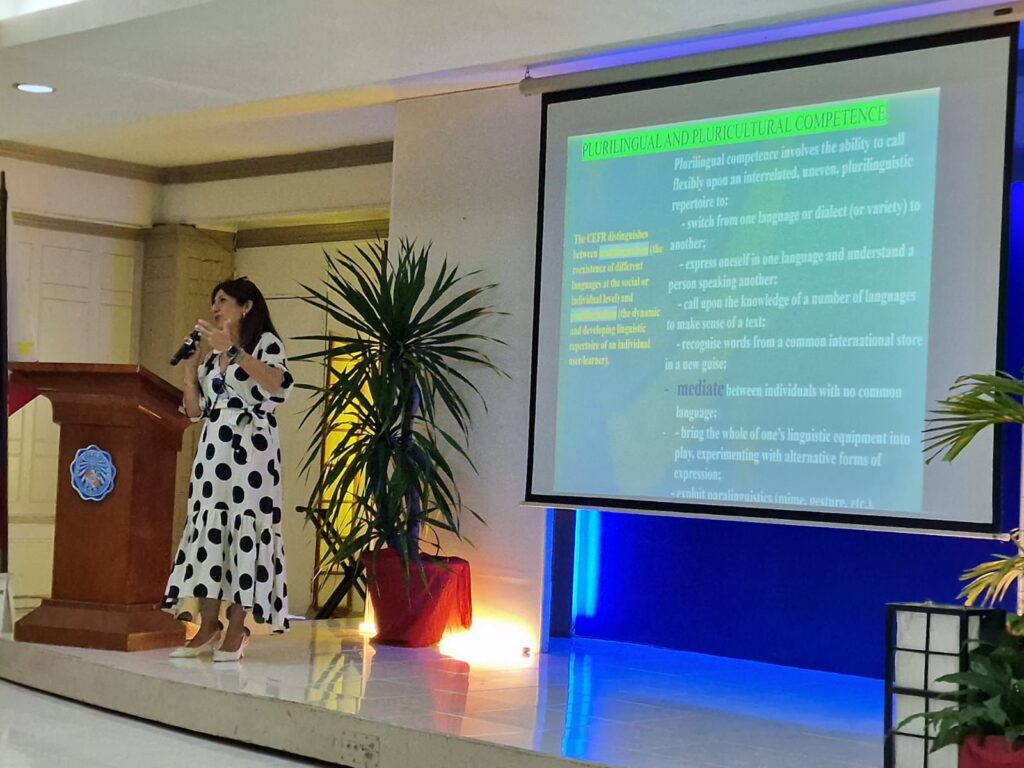
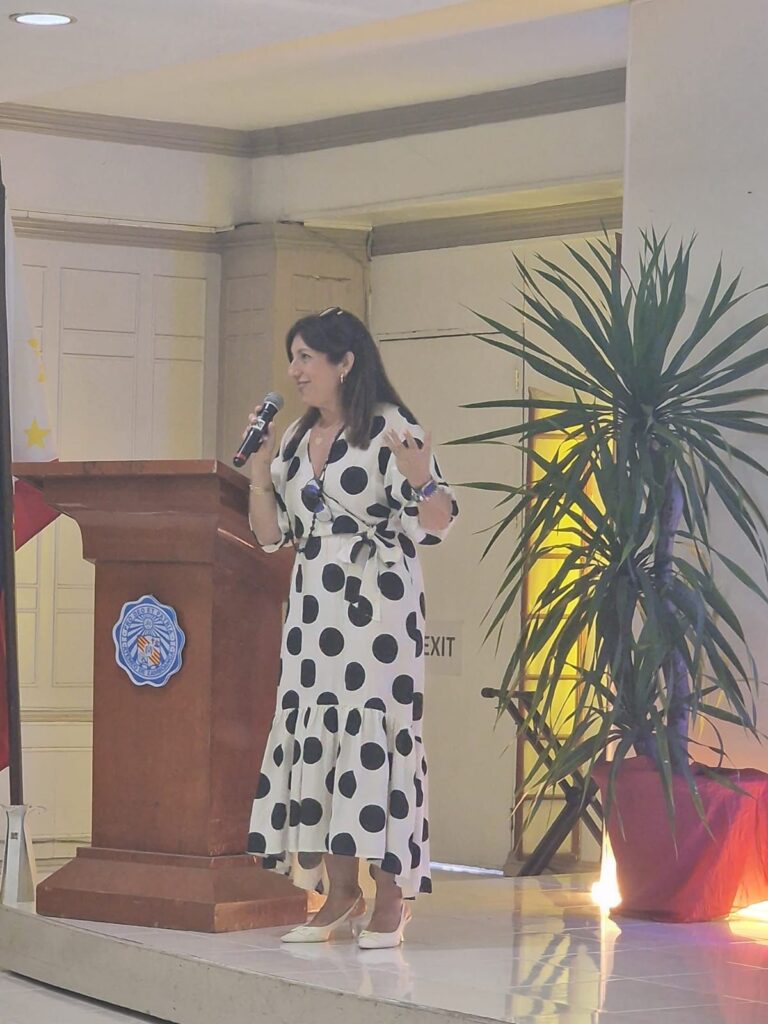
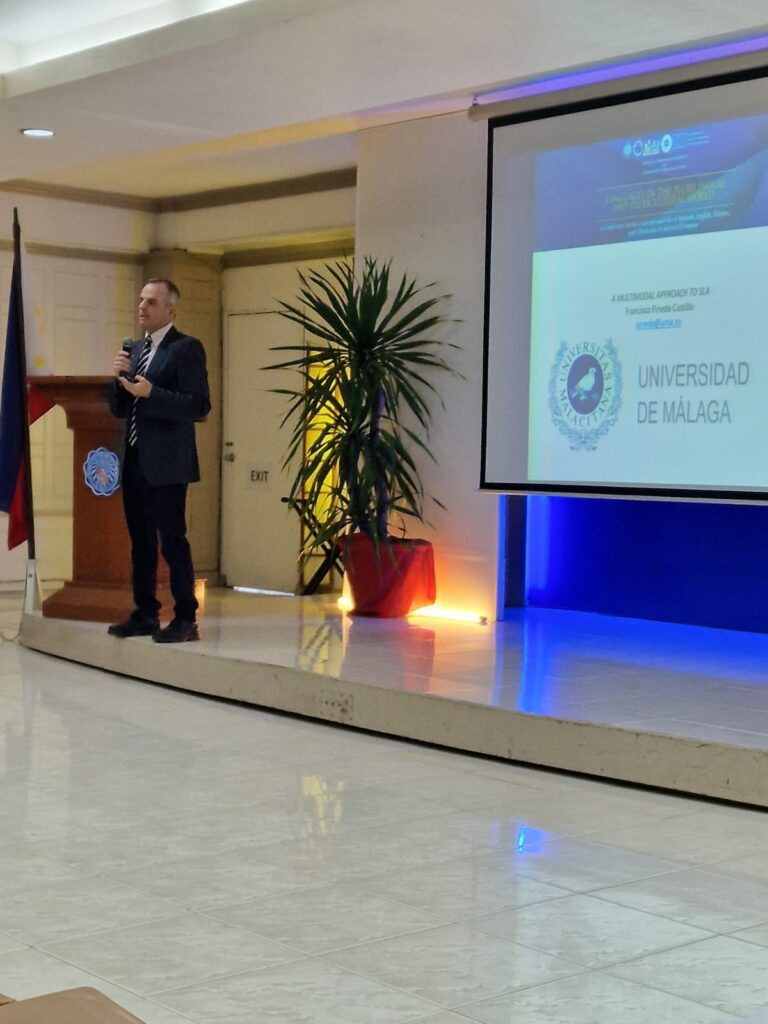
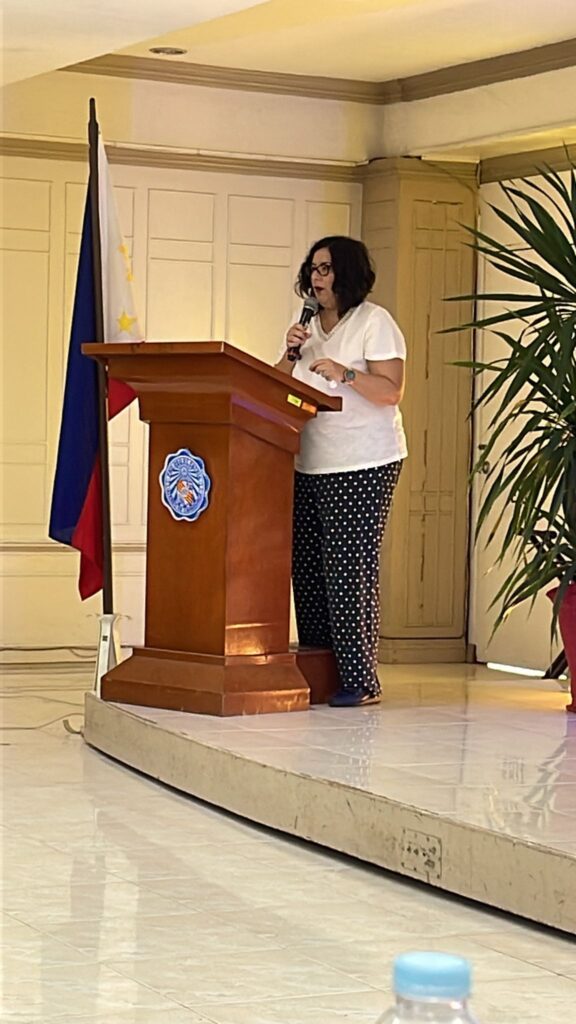


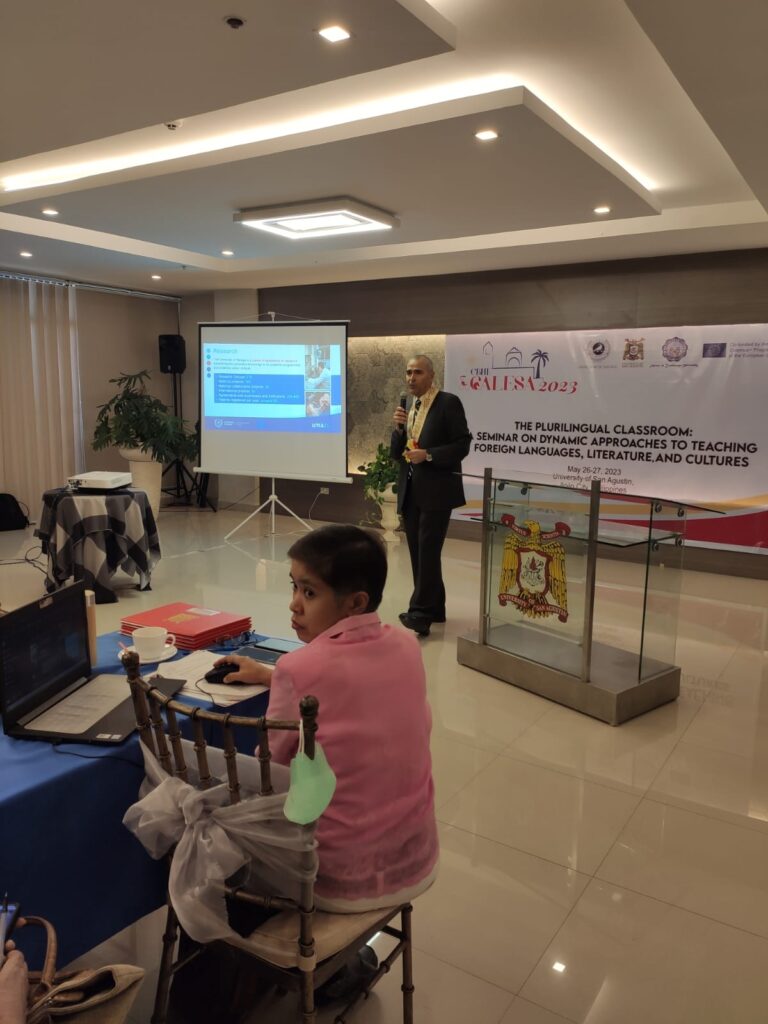
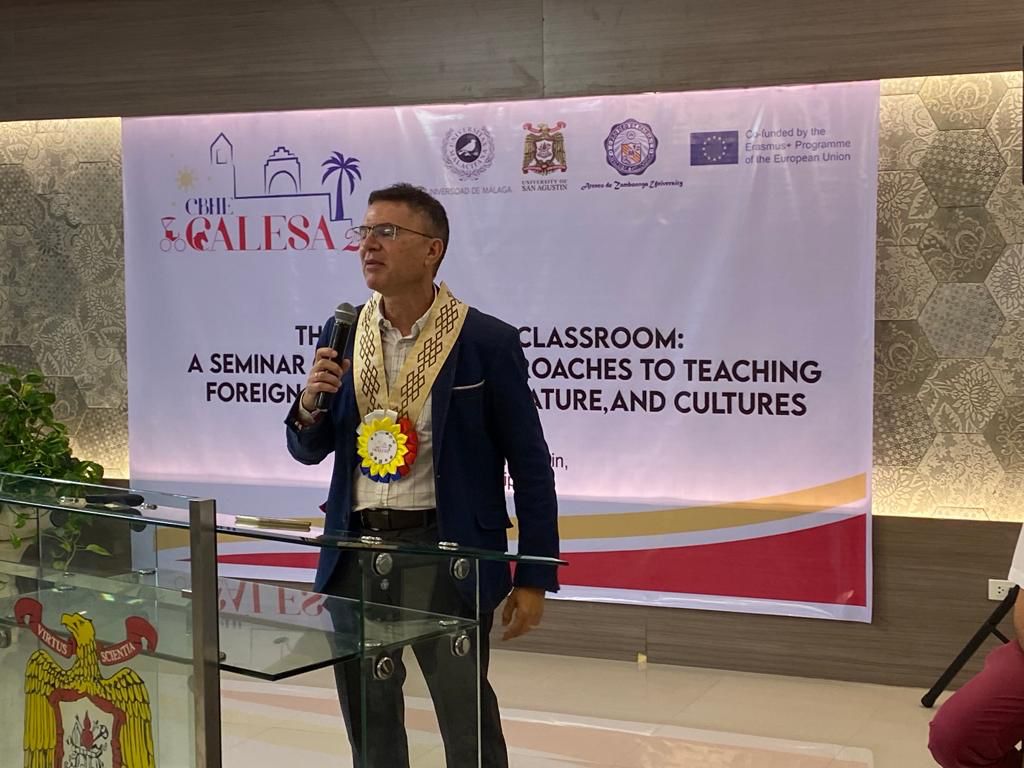
Conference
